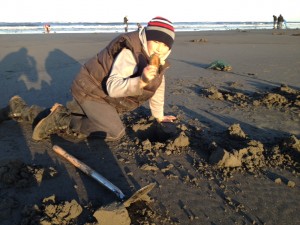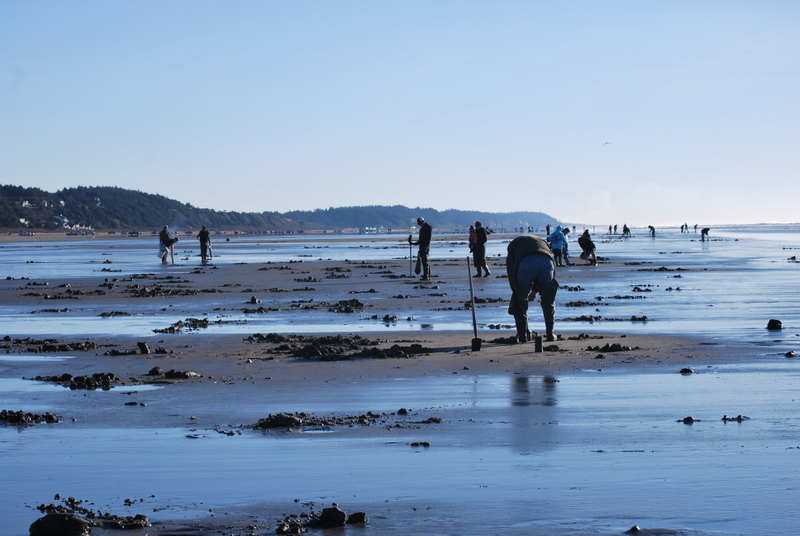Submitted by Washington Department of Fish and Wildlife
Three of Washington’s ocean beaches will remain closed to razor clam digging for the rest of the season while a potential dig at Mocrocks depends on additional toxin tests the Washington Department of Fish and Wildlife reports.
Test results on razor clams dug at both Long Beach and Twin Harbors beaches indicate levels of domoic acid exceed the threshold (20 parts per million) set by state public health officials, said Dan Ayres, coastal shellfish manager for the Washington Department of Fish and Wildlife (WDFW).
“Based on the most recent toxin tests, razor clams will not be safe to eat for the remainder of the month at Long Beach or Twin Harbors,” Ayres said.
Toxin levels at Copalis beach are under the health threshold. However, the beach will remain closed because diggers reached the number of harvestable razor clams for the season there, Ayres said.
State shellfish managers will consider scheduling an opening at Mocrocks later in May, depending on the results of two toxin tests, Ayres said. The first test results indicate levels at Mocrocks are just below the threshold. A second test is scheduled for next week.
“It’s possible toxin levels at Mocrocks will remain low enough to allow another dig there,” Ayres said. “But we need to see what the next results show before scheduling an opening.”

The department likely will make an announcement next week on whether there will be another dig at Mocrocks this season.
WDFW routinely closes the razor clam fishery by the end of May when the clams begin to spawn. The next season will begin in fall, when the older clams have recovered from spawning and a new generation begins to grow beneath the sand.
Domoic acid, a natural toxin produced by certain types of marine algae, can be harmful or even fatal if consumed in sufficient quantities. The toxin has posed problems for razor clam and crab fisheries along Washington’s coast for the last two years.
More information about domoic acid, as well as current levels at all ocean beaches, can be found on WDFW’s webpage.





















































